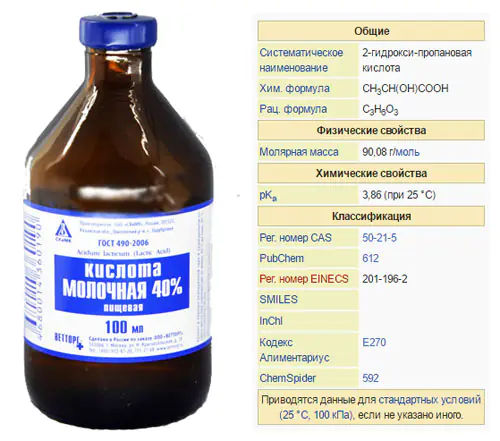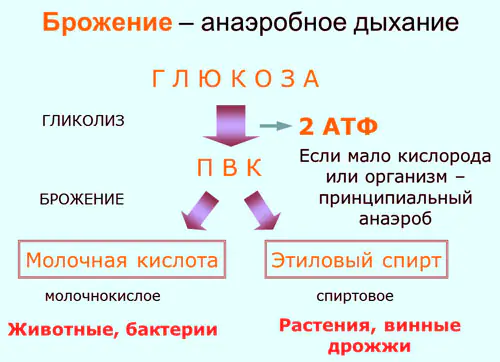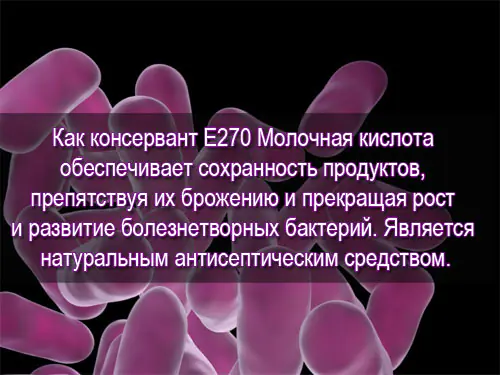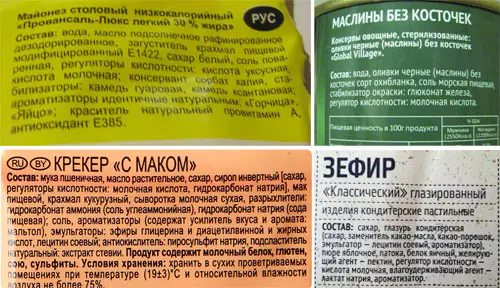Used in the meat industry: sausages, deli products, liver and blood sausages, pates; softening of pork skin, mucous membrane of pork and beef tongues, canned meat.
Used in the fishing industry: canned fish, etc.
Used in the dairy industry: mayonnaise, sauce, seasonings, margarine and butter, cheese, yogurt, kefir.
Used in the confectionery industry: marmalade, marshmallows, marshmallows, caramel with fruit filling, sunflower halva, gingerbread and other products.
Used in the baking industry: dough, bakery products.
Used in the beverage industry: soft and alcoholic drinks, beer and kvass.
Used in the canning industry: canning fruits and vegetables.
Organoleptic characteristics:
| Appearance | A yellowish, syrupy and water-intensive liquid with a sour odor. |
| Color | From white to yellow. |
| Taste, smell | Natural, without foreign tastes and odors. |
TECHNOLOGICAL PROCESS FOR PRODUCTION OF MEAT PRODUCTS USING LACTIC ACID 80%
Lactic acid 80% is used:
— to improve the microbiological purity of sausages and delicatessen products. The consumption of this drug is 0.6 g per 1 kg of minced meat or brine.
- to facilitate the removal of mucous membranes from tongues. To do this, add 100 g of lactic acid to 10 liters of hot water and pour the tongues. The tongues should be completely covered with liquid. This mass is heated for 60 minutes at 98°C. Then the tongues are placed in a cauldron with warm water and the mucous membrane is immediately removed. After removing the mucous membrane, the tongues are washed in cold water to remove the sour taste.
— for blanching raw materials for liver sausages and pates. To do this, when cooking, add 50 g of 80% lactic acid to 30 liters of hot water. This allows you to reduce cooking time, which reduces losses during cooking of raw materials.
— for washing equipment. To do this, prepare a solution at the rate of 50 g of 80% lactic acid per 1 liter of water and wash the equipment with this solution. Before starting work, it is recommended to rinse the equipment with cold water to remove the sour taste.
- in the production of blood sausages. Before processing, add 1-2 g of 80% lactic acid per 1 kg of weight to the blood.
- for processing natural casings. Prepare a solution of 1 part 80% lactic acid and 10 parts water. The shell is soaked in this solution for 3 to 10 minutes.
- when soaking and cooking pork skin. Consumption is 250-500 g per 15 liters of water per 10 kg of pork skin.
To prepare pork skin emulsion raw pork skin is thoroughly cleaned of dirt, remaining bristles and washed in cold water. The prepared pork skin is soaked in pre-prepared brine (70 kg of pork skin requires 100 liters of brine, to which 1.7 - 3.4 kg of lactic acid is added), ensuring its complete immersion in the brine. Maintain at a temperature of 2-4°C for 12-24 hours, wash with cold running water and leave to drain. Then the skin is ground on a grinder with a grid hole diameter of 3-5 mm. The crushed skin is loaded into the cutter, ice (water) is added and cut at high speed to a creamy consistency. It is advisable to add ice in parts. The final temperature of the pork skin emulsion should not exceed 14°C. The emulsion yield from pork skin is 300%. After the cutter, it is recommended to further process the pork skin emulsion using fine grinding machines (emulsifiers). In order to improve the presentation and cut appearance of finished sausages, it is recommended to use fermented rice food coloring in the production in an amount of 0.1-0.3 kg per 100 kg of finished pork skin emulsion. Other dyes are used in accordance with the manufacturer's recommendations for their use. The resulting emulsion is stored at a temperature of 2-4°C for 24 hours. It is recommended to use it instead of raw meat.
Safety!
Lactic acid 80% is an irritant and can cause burns. Avoid contact with clothing, skin and eyes. If clothing is saturated with concentrated acid, it is necessary to remove the clothing and wash it. In case of contact with skin, wash off the acid with water. In case of contact with eyes. Immediately rinse with water for 15 minutes. If irritation continues, seek medical attention.
Lactic acid (E270).
Food additive E270 Lactic acid belongs to the group of preservatives and antioxidants, a completely natural product, therefore it is a practically safe substance. Chemical formula CH3CH(OH)COOH.
General characteristics and production of lactic acid
Lactic acid is a clear liquid without turbidity or sediment. The characteristic sour smell and taste is a distinctive feature of E270. Lactic acid is of natural origin; it is formed naturally in all living organisms, during the breakdown of glucose.

It should be noted that the more active a person’s lifestyle (the brain and muscles are powered by energy supplied by glucose), the more lactic acid is produced. Lactic acid is produced in muscles during anaerobic glycolysis, which causes a burning sensation. After training, muscles may ache, which is associated with muscle microtraumas. Excess substances are removed from the body by the kidneys, so even a large amount of lactic acid does not cause any harm.

Natural suppliers of lactic acid are dairy products, which form lactic acid during the natural fermentation process. The same principle underlies the industrial production of E270.
Purpose of E270
As a preservative E270, Lactic acid ensures the safety of products by preventing their fermentation and stopping the growth and development of pathogenic bacteria. It is a natural antiseptic.

Benefits of Lactic Acid
Lactic acid, due to its natural origin, is completely harmless to the body; moreover, products that contain the food additive E270 Lactic acid enriched with lactobacilli are recommended for consumption by people with problems with the gastrointestinal tract, because contribute to the normalization of metabolic processes.
Food additive E270 is used in the production of food for children.
Applications of Lactic Acid
The main application of E270 is the food industry. Cheeses, mayonnaise, yoghurts and almost the entire line of fermented milk products contain lactic acid. E270 can often be seen on the labels of soft drinks, fats and oils, as well as confectionery products. Lactic acid is used as a preservative in the production of canned products - canned fish and meat are better preserved using E270.

Use of E270 in Russia
The food additive E270 Lactic acid is allowed to be used throughout Russia without any restrictions. The use of the food additive was not regulated due to its harmlessness.
| Change |
| Sheet |
| Document no. |
| Signature |
| date |
| Sheet |
| TSTU 240902 PZ PZ |
In the food industry lactic acid It is used very widely, since this product has no contraindications; food with its addition can be used even in diets associated with diseases of the gastrointestinal tract, kidneys, etc. In our company, this food additive is created in accordance with all the requirements of state standards. This acid is produced by fermentation of molasses, raw sugar or beet molasses and lactose whey.
Thus, lactic acid is used in the following food industries. As a food additive in baking, lactic acid is most often used for prophylaxis in the fight against potato disease, which is caused by potato sticks Bacillus mesentericus, which are resistant to high temperatures, and to improve the taste of products made from wheat flour. Acidifying the medium with lactic acid accelerates the ripening of the dough before cutting, preventing the development of foreign microorganisms in it. Bread obtained by the accelerated method contains a large amount of sugars, water-soluble carbohydrates and bisulfite binding compounds, which is reflected in an increase in the porosity of the bread, improved crumb properties, aroma, taste and increased resistance to staleness.
In the confectionery industry, lactic acid and its sodium salt (sodium lactate) are used in the production of marmalade, marshmallows, marshmallows, caramel with fruit filling, sunflower halva, gingerbread and other products. Lactic acid is preferable to others, since it is a weakly inverting acid and is easily distributed in viscous confectionery masses, having a high diffusion rate.
Lactic acid is used in the production of meat and meat products due to its high diffusion properties, antimicrobial effect, ability to plasticize proteins, accelerate meat ripening, loosen collagen bundles, regulate pH and taste. Treatment of meat and meat products with aqueous solutions of lactic acid ensures a pH level of 4.0-5.4, promotes the formation of a “protective layer” of 5 to 20 mm on the surface impregnated with acid, which prevents the development of putrefactive microbes.
In the beer and soft drink industry, lactic acid is used in the preparation of raw malt or mash to reduce water hardness, create an optimal pH level, improve the physiological state of yeast, increase the yield of extractives from malt, and also to regulate taste and aroma.
| Change |
| Sheet |
| Document no. |
| Signature |
| date |
| Sheet |
| TSTU 240902 PZ PZ |
Currently, the production of canned fruits and vegetables, snacks, juices and other canned products is carried out in accordance with technical documentation, including state standards, technological instructions and industry standards. When preparing marinades, it is recommended to use mixtures of acetic and lactic acids. It has been established that a stronger antimicrobial effect with lower acidity is achieved when these additives are combined. Marinades acquire a more delicate aroma and mild sour taste. Keeping vegetables in an acidic environment with a pH of 3.0-4.0, created by lactic acid, for 30-60 minutes. allows you to remove nitrates from them (RF Patent 179091 SA23 L1/12), which is important from a hygienic point of view.
The use of lactic acid in veterinary medicine and poultry farming is due to its antifermentation and antiseptic effect, the ability to suppress the growth of putrefactive intestinal microflora, reduce the formation of toxic products of decomposition of organic substances in the body, improve metabolic processes and promote increased productivity.
Lactic acid is used as a cauterizing agent in the form of a 10-50% solution for ulcerative lesions of the skin and mucous membranes. Lactic acid sprayed in the form of an aerosol is used to disinfect the air in poultry houses and incubators for pullorosis, typhus, cholera and in calf barns in the presence of young cattle unfavorable for infectious rhinotracheitis, diplococcal infection.
Didn't find what you were looking for? Use the search:



